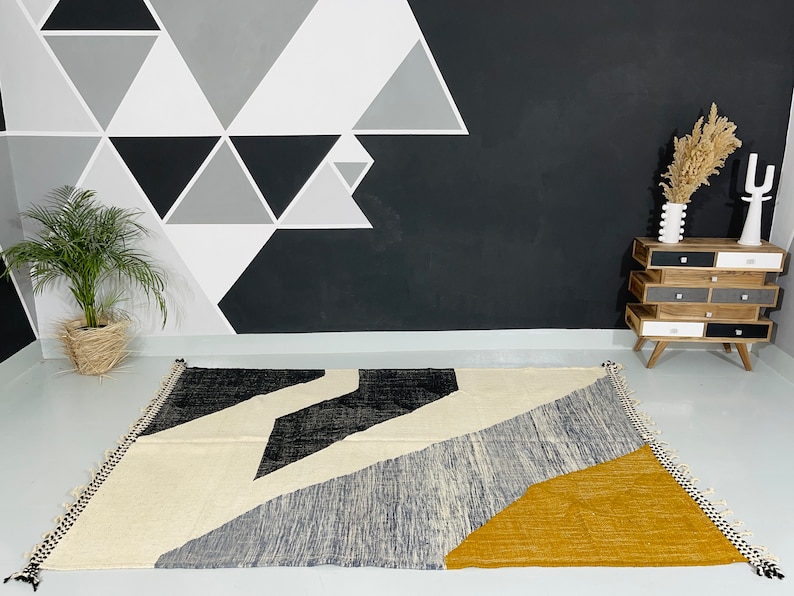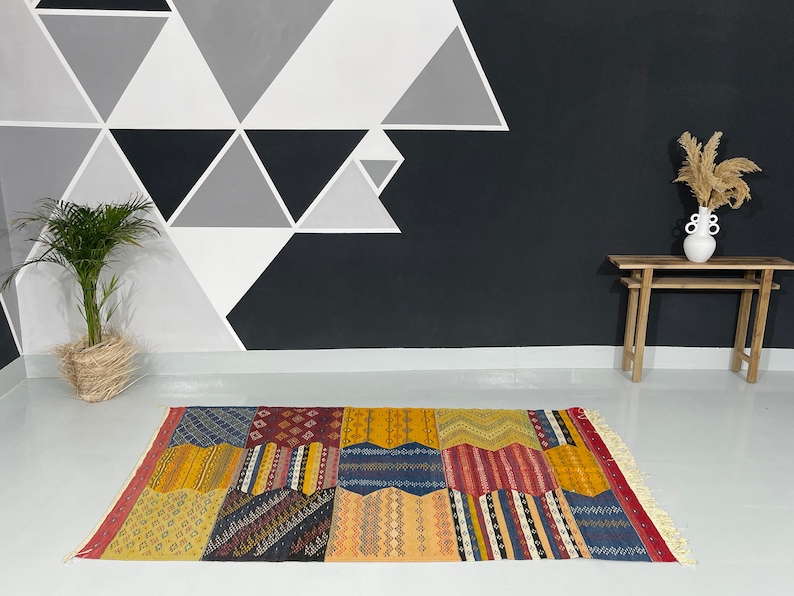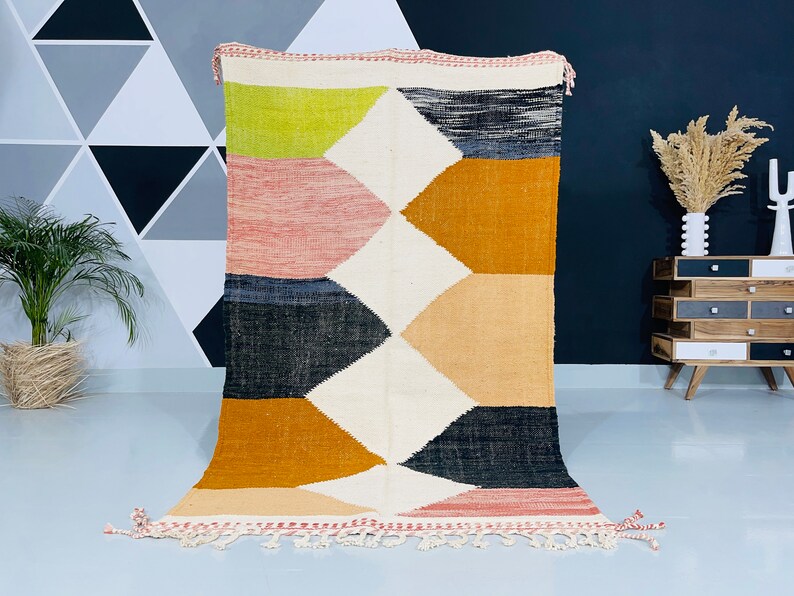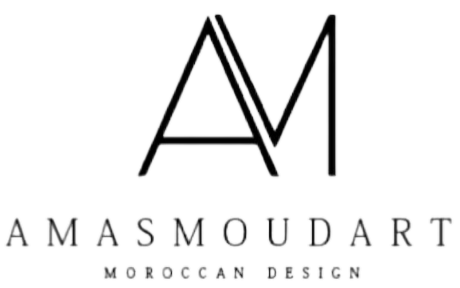Kilim rugs have a rich history that can be traced back centuries, and Morocco is one of the countries that has kept this tradition alive. These rugs are not only beautiful, but they also tell a story of the people who created them and the cultures they represent.
Moroccan Kilim rugs, also known as flat-weave rugs, are handwoven using wool, cotton, and silk fibers. They are known for their vibrant colors, geometric patterns, and intricate designs. These rugs are made using a technique that involves tightly weaving the weft and warp threads together, creating a flat surface with no pile. This technique results in a lightweight rug that can be used as a floor covering, wall hanging, or even as a piece of furniture.

Kilim rugs have been a part of Moroccan culture for centuries. They were originally made by Berber tribes in the Atlas Mountains and were used as floor coverings, bedding, and even as saddlebags for their camels. Over time, these rugs became more than just functional objects, they became a way for people to express their creativity and tell their stories.
Today, Kilim rugs are still an important part of Moroccan culture and are highly sought after by collectors and interior designers around the world. Each rug is unique and tells a different story. Some Kilim rugs feature bold, geometric designs, while others have more intricate patterns with floral and animal motifs.
Moroccan Kilim rugs come in a variety of sizes, from small mats to large area rugs. They are also available in a range of colors, from bright and bold to soft and muted. Some of the most popular colors used in Kilim rugs include red, blue, yellow, green, and black.

When it comes to decorating with Kilim rugs, there are many ways to incorporate them into your home. They can be used as a statement piece in a room, or as a way to add texture and color to a neutral space. Kilim rugs can also be layered over other rugs to create a bohemian-inspired look.

In conclusion, Kilim rugs are an important part of Moroccan culture and a beautiful representation of the country’s artistic traditions. These rugs are not just functional objects, but pieces of art that tell a story. Whether you’re a collector or simply looking to add some color and texture to your home, a Moroccan Kilim rug is an excellent choice.

